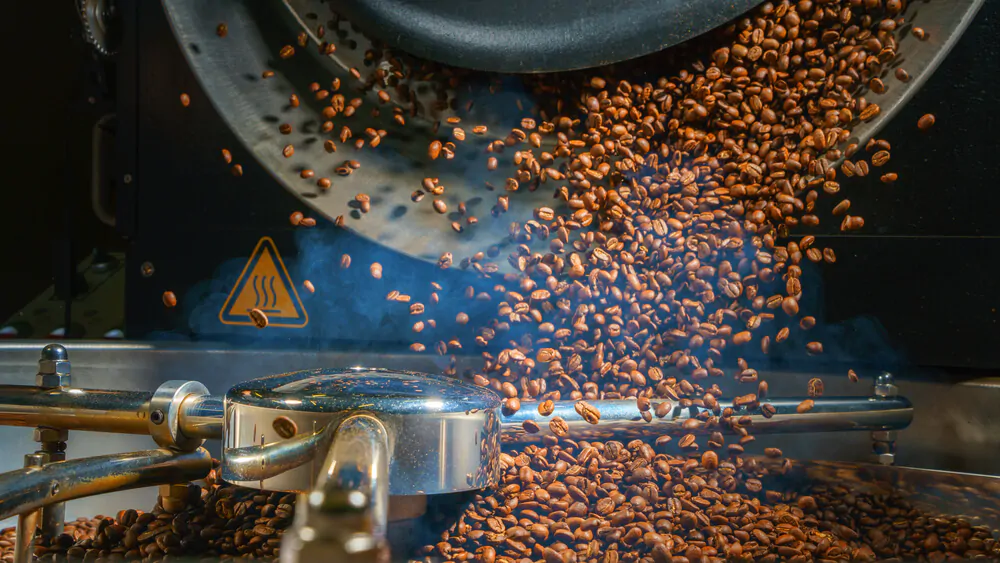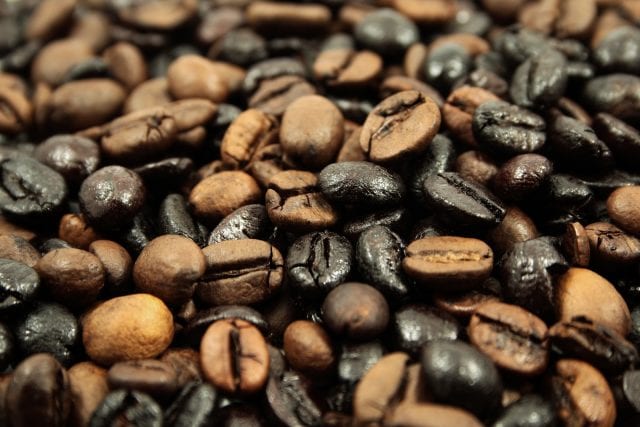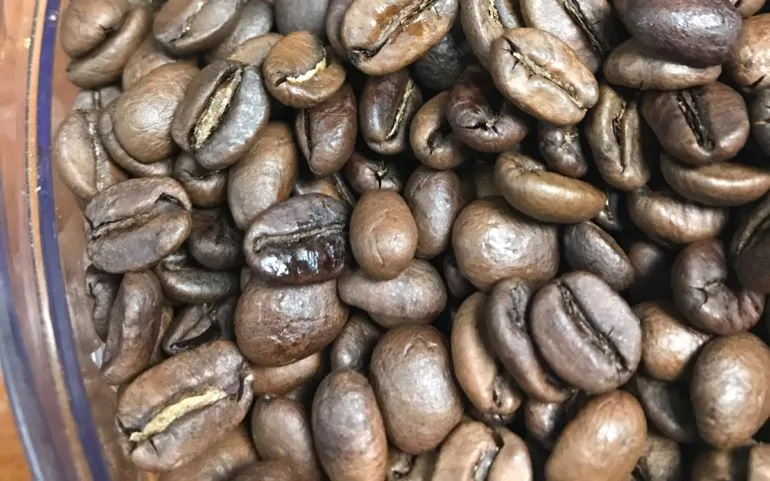Coffee roasting is delicate and complicated process. To avoid bitter-tasting coffee, it’s important to know the common coffee roasting defects. Read more here.

Because coffee comes from beans, creating a smooth and delicious roast is both an art and a science. Coffee roasters spend countless hours nurturing and harvesting their beans before roasting them to perfection. However, because coffee plants are notoriously fickle, not every batch comes out perfectly.
Both the quality of the beans and the skills of the roaster can lead to various problems and defects. If you’ve ever wondered why your coffee may taste off-putting, it could be because of coffee roasting defects. Let’s break down the most common issues that roasters can experience.
Coffee Roasting Defects
1. Baking

This defect is a perfect encapsulation of why it can be so challenging to roast every batch correctly. Depending on who you ask, baking coffee beans can mean different things. For some, baking occurs because the beans were overdeveloped (more on that later).
For others, it means that the roasting temperature rose sharply, then declined, then rose again. While the technical details of baked coffee beans can differ, the issue stems from the beans roasting for too long before cracking. Coffee beans usually break around 385 degrees F, and that’s what gives the beans their distinctive split appearance.
If the beans take too long to crack, that means either they’re too wet or too dry. Cracking occurs when water evaporates and splits the bean down the middle. Either way, the result is a flat, papery flavor in the final cup.
2. Tipping

Some coffee roasters will work quickly when heating their beans, resulting in minor scorch marks on the tips of the beans. You can tell if coffee beans are tipped because they’ll have a small black spot on one or both ends.
Since tipping doesn’t affect the whole bean, it doesn’t diminish a coffee’s flavor profile too much. However, if most of the beans are tipped, that can cause a slightly smoky and oily flavor to the beverage once brewed.
3. Scorching

If a roaster raises the temperature too much too quickly, they can literally scorch the beans. Instead of a small black spot, the whole bean will look like a miniature charcoal briquette. Usually, scorched beans are few and far between, and high-quality roasters will remove them before packaging.
However, cheaper roasters may leave them in, and they can throw off the taste of your brew. If you like to grind your own coffee beans, look for scorched or tipped ones before grinding. Doing this will yield better flavors and tell you which brands have the best quality control systems.
4. Facing

Facing is another type of scorching, but it doesn’t affect the whole bean. Instead, it happens when beans get stuck against the hot metal for too long. One side of the bean will be black while the rest is roasted normally.
As with the other defects, you shouldn’t find too many faced beans in an entire batch, and they’re relatively easy to spot.
5. Chipping

Some coffee beans can’t take the pressure of cracking, so they will lose a chunk of themselves during the roasting process. Since darker roasts will go through two cracking phases, this defect almost always affects them and not light or medium roasts.
It’s easy to spot chipped beans since they’ll have a piece missing, which will usually look black and burnt. Chipping doesn’t usually affect the flavor too much unless a lot of beans are affected. The charred section can deliver a smoky and unpleasant aftertaste.
6. Quakers

No, we’re not talking about the people you find on an oatmeal box. Quakers are unripened coffee beans. Unfortunately, they’re hard to spot during the roasting process because they’ll look very similar to ripe coffee beans.
The best way to spot a quaker is by the taste, which will be dry and papery. That said, these beans can also look lighter than the rest of the batch, so you might be able to pull them out.
Bonus: Overdeveloped vs. Underdeveloped Coffee
The reason coffee beans taste so good after roasting is something called the Maillard reaction. This reaction happens because the natural sugars and amino acids start to bind, creating new flavors and aromas. Without this reaction, no one would want to drink bland, slightly bitter coffee.
If you don’t roast the beans long enough, you don’t give the acids and sugars enough time to blend. For example, since lighter roasts use the least amount of time, they’re more bitter than darker roasts. So, underdeveloped means that the beans should have roasted longer, while overdeveloped means they roasted for too long.
The problem is that these terms are highly subjective, so it’s hard to state whether a batch is truly under or overdeveloped. Overall, it depends on the kind of roast.
The Final Word on Coffee Roasting Defects
Since coffee beans don’t grow uniformly, there are bound to be defects in every batch. What matters is if the roaster takes the time to adjust its practices and removes defective beans before packaging and selling them.
Keep in mind that pre-ground coffee can hide defects better because everything is already mixed. If you grind your own beans, you can inspect them for problems and ensure that you get a better cup every time. Want to learn more about roasting coffee? Check out our guide to the color of coffee.
FAQs About Coffee Roasting Defects
What is the difference between a light roast and a dark roast?
A light roast typically ends shortly after the first crack, while a dark roast usually goes until the second crack. As we mentioned, cracks occur when moisture creates steam pressure inside the bean, splitting it open.
What causes tipping in coffee roasting?
Usually, tipping happens because the beans were heated too rapidly. This defect often occurs during the second crack, but not always.
